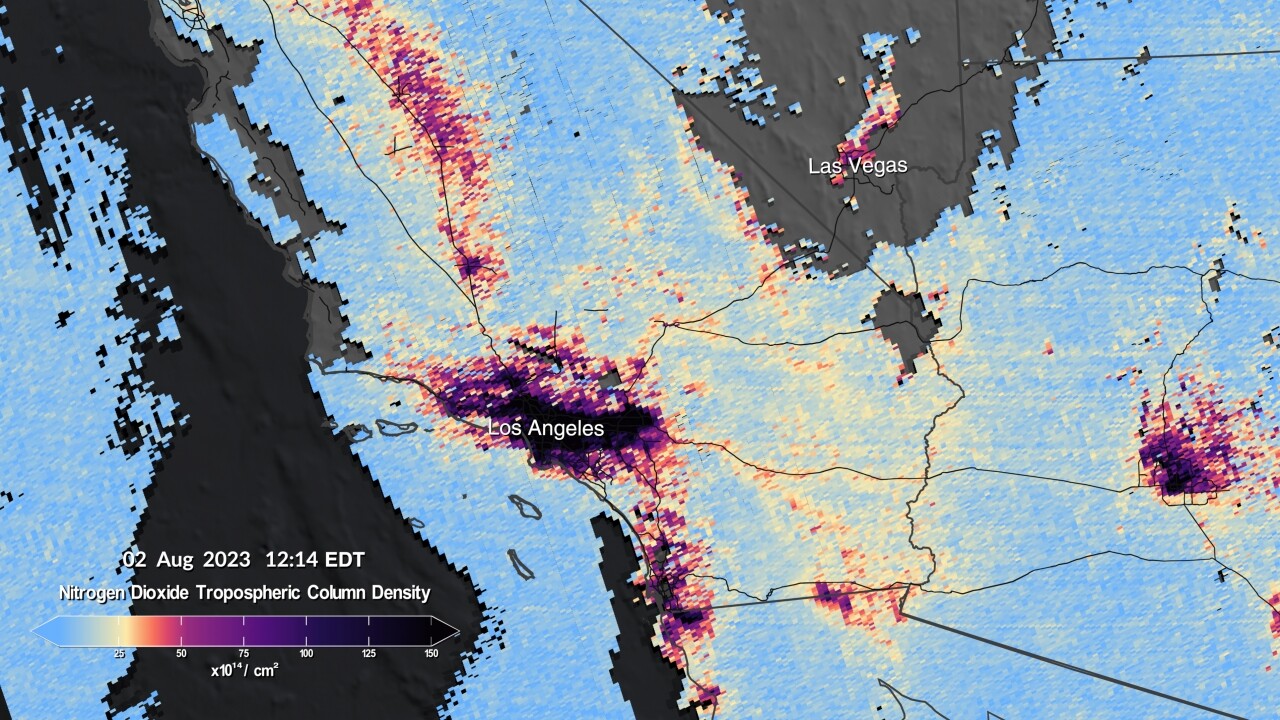About 22,000 miles above the equator, NASA's Tropospheric Emissions: Monitoring of Pollution (TEMPO) instrument has started returning images and data showing the concentration of pollution in U.S. urban centers.
Recently, NASA released several images that show larger concentrations of nitrogen dioxide gas from pollution around cities and major transportation arteries. The images highlight the disparities in air quality within a community. NASA's equipment can provide a measure of air quality down to within a few square miles.
For instance, the photo above shows excessive amounts of nitrogen dioxide gas in the Los Angeles area, but much lower densities outside the metro area. This image was taken just after the 9 a.m. rush hour.
But four hours later, some of that pollution disappeared.

Nitrogen dioxide is among the various atmospheric gases the instrument can detect.
“TEMPO is beginning to measure hourly daytime air pollution over greater North America,” said Kelly Chance, senior physicist and TEMPO principal investigator. “It measures ozone, nitrogen dioxide, formaldehyde, aerosols, water vapor, and several trace gases. There are already almost 50 science studies being planned that are based around this new way to collect data.”

SpaceX and NASA launched 4 astronauts from 4 nations into space
SpaceX has successfully launched eight crews for NASA.
The Biden administration heralded the TEMPO instrument as it was launched earlier this year.
“Neighborhoods and communities across the country will benefit from TEMPO’s game-changing data for decades to come," said NASA Administrator Bill Nelson. "This summer, millions of Americans felt firsthand the effect of smoke from forest fires on our health. NASA and the Biden-Harris Administration are committed to making it easier for everyday Americans and decisionmakers to access and use TEMPO data to monitor and improve the quality of the air we breathe, benefiting life here on Earth.”
The instrument takes hourly daytime scans of the lower atmosphere over North America from the Atlantic to Pacific coasts and from roughly Mexico City to central Canada, NASA said. It uses an advanced spectrometer that detects pollution normally hidden within reflected sunlight.
The instrument can measure sunlight that is scattered by pollution.










